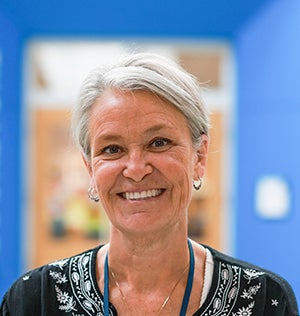Riverland director of admissions: ‘Community colleges are all about access and opportunity’
Published 9:00 pm Friday, November 11, 2022
|
Getting your Trinity Audio player ready...
|
Any action by Supreme Court regarding affirmative action shouldn’t have impact on community colleges
Earlier this month, the Supreme Court began hearing arguments regarding the use of affirmative action in higher education. Justices heard from six different lawyers in challenges to policies at the University of North Carolina as well as Harvard.
The policies consider race among many factors in evaluating applications for administration. One justice likened affirmative action to a head start in a race, while liberal justices suggested without affirmative action minority enrollment would drop.
Locally, Nel Zellar, director of admissions for Riverland Community College, said Riverland had an open admission policy, something she said all community colleges had. Race is also not a consideration in admissions.
“Community colleges are all about access and opportunity,” she said. “We believe that every student out there to have the opportunity to get a college education, and community colleges are a great way to do that.”
According to Zellar, community colleges did not have the competitive admissions process of other institutions that looked at factors such as GPA, standardized test scores or high school prep standards.
She described community colleges as inclusive.
She said for community colleges, if potential students provided transcripts or a GED, they would be admitted to a community college. Before starting, students could still do assessments in determining course placement.
“We want to make sure that students are ready to be successful in college-level classes,” she said.
Riverland has an online application — a universal application that’s used by Minnesota State that’s used by all four- year and two-year colleges, something Zellar described as “pretty basic” and included questions about demographics, where the applicant attended high school and if the applicant attended a previous college. They do not have to fill out prep standards questions. Questions about race are used as demographic data for things such as scholarships or grants.
The University of Minnesota is not part of the Minnesota state colleges and universities.
In their effort to eliminate potential barriers for application, Riverland even admitted their application fee years ago.
“College is possible for everyone or most people,” Zellar said. “Sometimes I think [potential students] think they’re not going to get accepted into a college, and the reality is for a lot of those students they will be accepted into a community college if they … complete high school or get their GED.”
Her colleague echoed her thoughts.
“We don’t expect that a ruling by the court on this matter would have any impact on our admissions decisions as the colleges and universities of Minnesota State do not use race as a criterion for admission,” said James Douglass, executive director of communications, media relations and marketing for Riverland, in an email. “We are proud of our position as the most diverse higher education system in Minnesota and being a beacon of opportunity for our indigenous communities, communities of color, first generation families and families from across the socio-economic spectrum.“ According to Douglass, this was the collective response as part of the Minnesota State system.
Zellar said 26% of RCC’s student body were people of color, a fact she described as “pretty impressive.” She said the Karen population was the fastest growing population, but the school had Somali students, Sudanese students and Asians, among others.
“It’s really very diverse,” she said.
She also cited Minnesota State Equity 2030, a 2019 goal to eliminate educational equity gaps at Minnesota State colleges and universities by 2030.
“Hopefully we’re going to admit the same number, but very importantly … the graduation rate will be the same retention rate,” she said.
In a poll, 63% of respondents supported banning race when making admissions decisions. On the other hand, 64% said programs designed to increase racial diversity were good.
“As a society, that whole equity and inclusion is a huge issue,” Zellar said. “The diversity continues to grow in our communities, which is great.
“We have a critical skilled labor shortage. We need to get all of our citizens educated and trained to participate in the workforce and make a living wage.”
Thomas Erickson, a student at Riverland, said schools did a good job to diversify their campuses, but at the same time felt they could do a better job. He said he’d heard of students not being able to attend school because they were looking for certain minorities to fill inclusion requirements.
Student Gage Hanna believed any student who applied should be accepted and felt schools shouldn’t pick-and-choose.
— The Associated Press contributed to this story.





